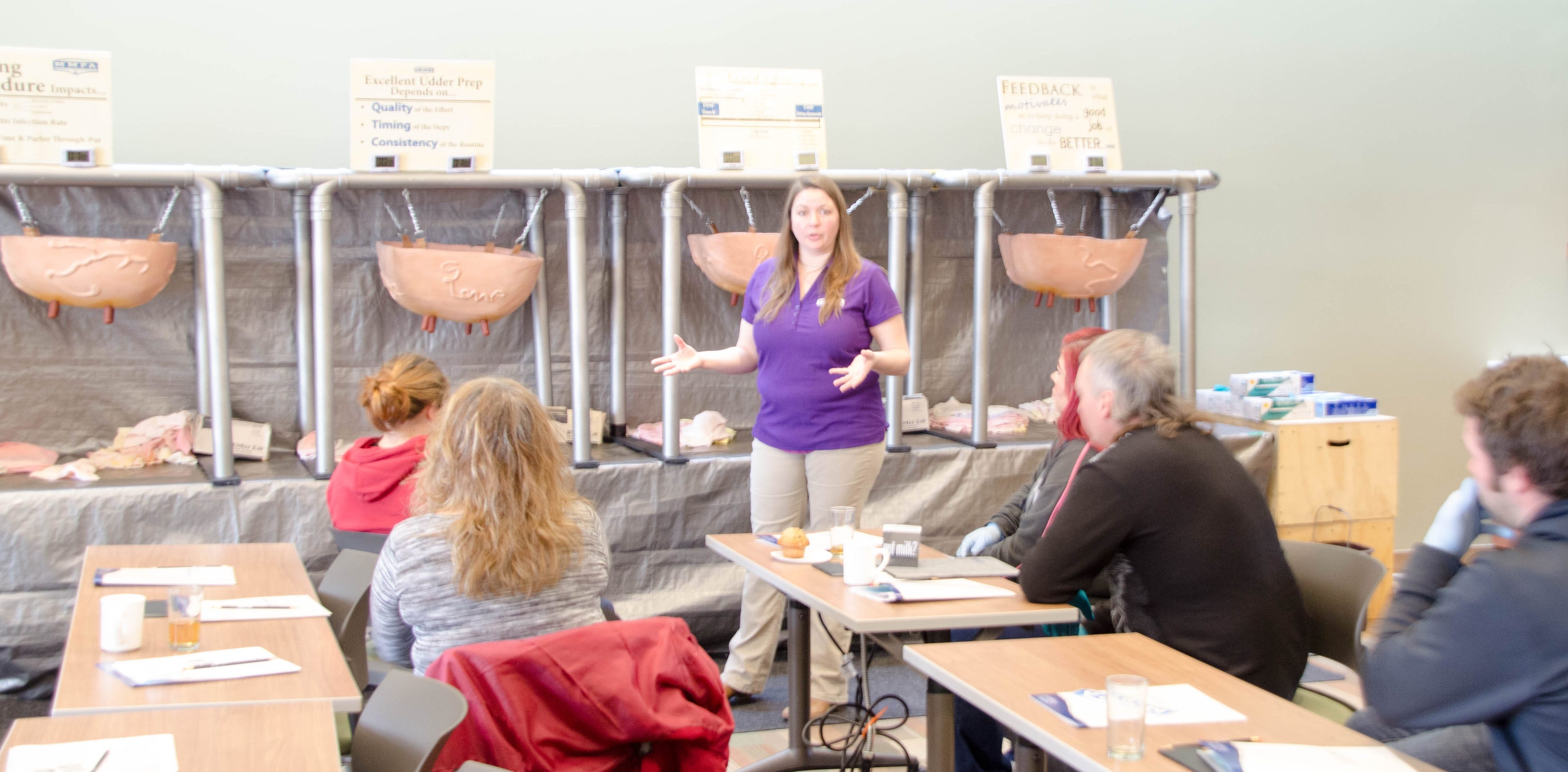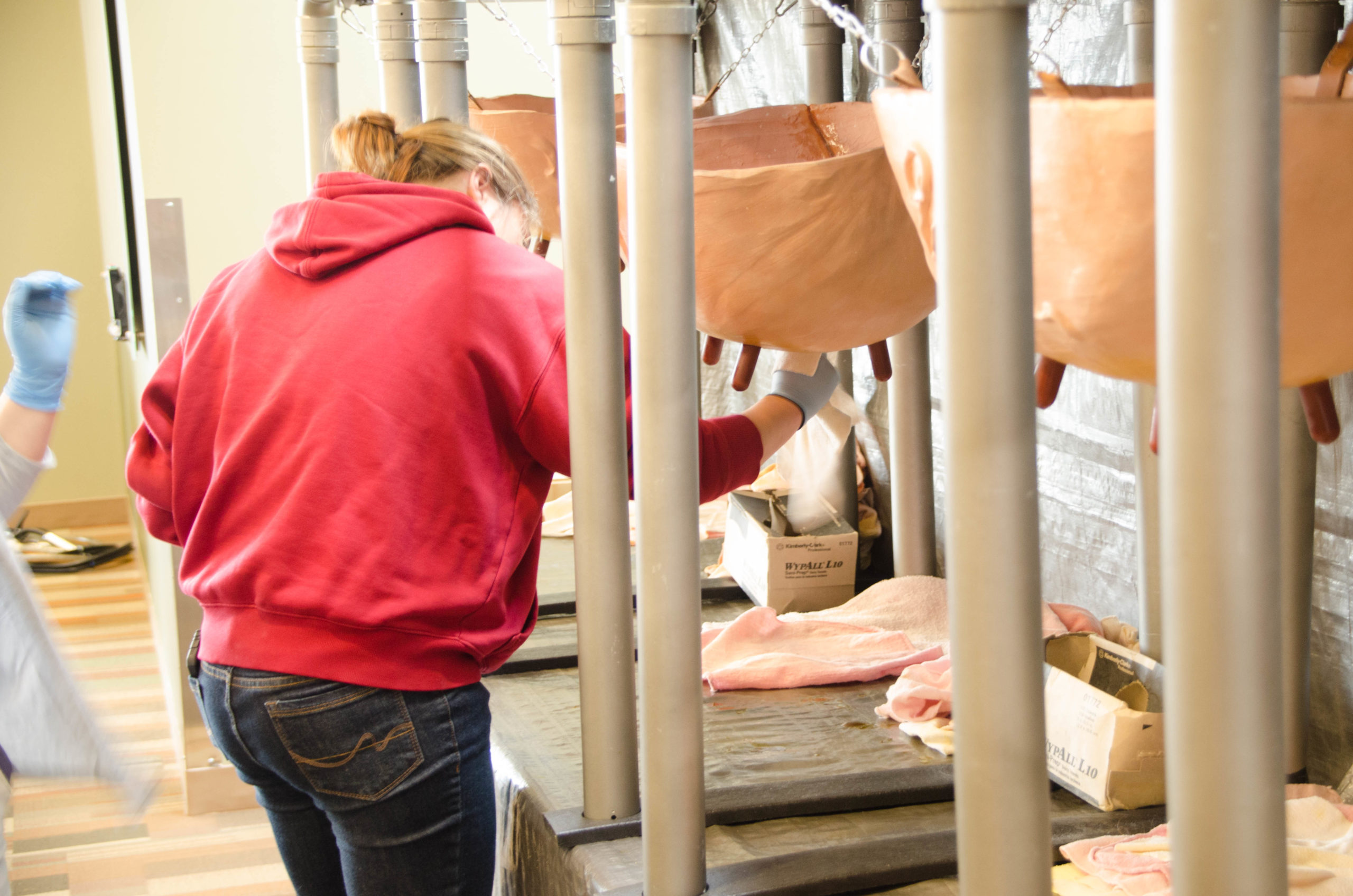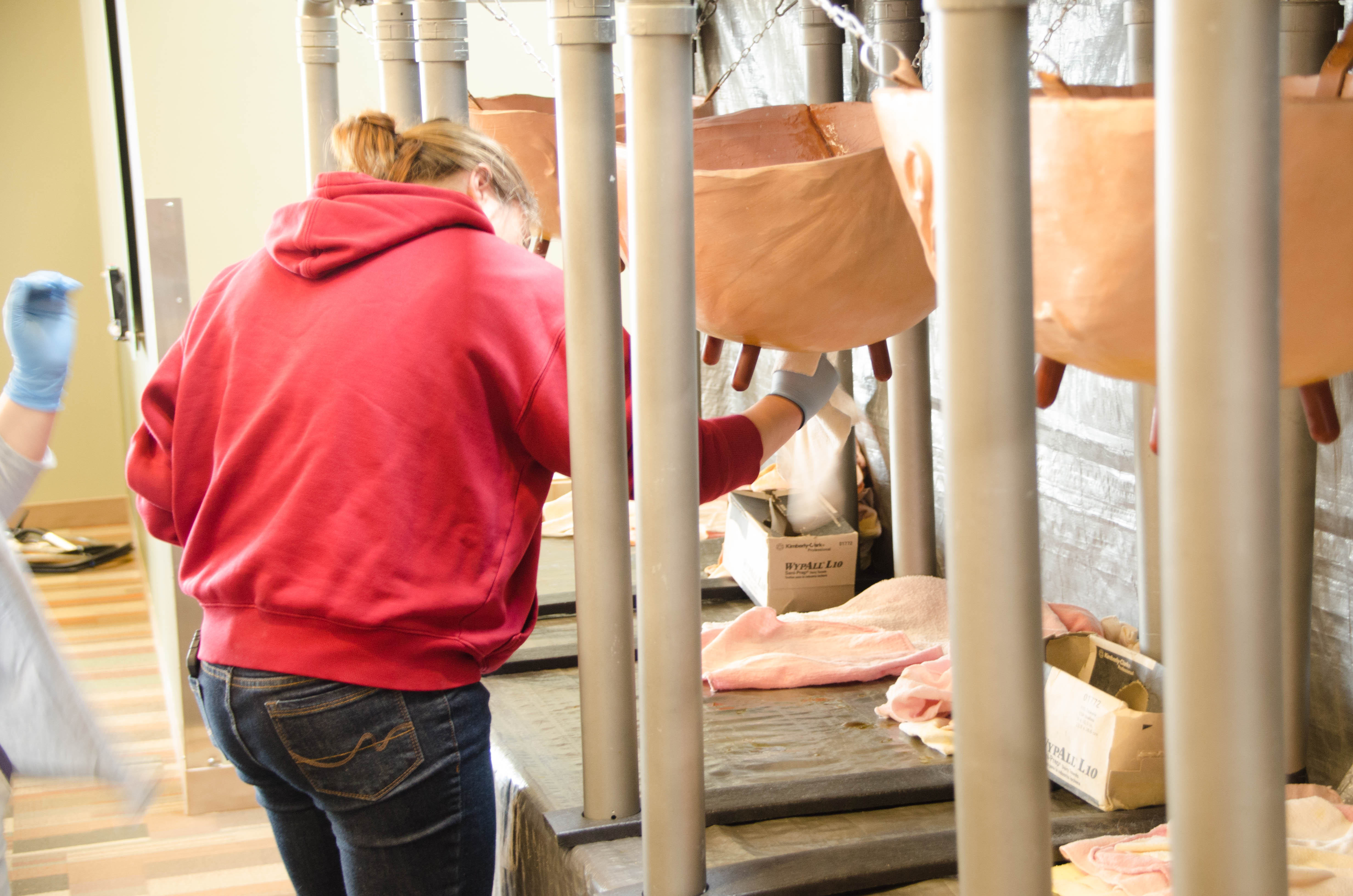Pre-dip. Massage for ten seconds. Move to the next cow in the set of four. Hurry back to the beginning to wipe the dip off and attach the milking unit within ninety seconds of starting. Wait until cows are done milking and remove the unit. Don’t forget to post dip the teats. Repeat.
Following this routine step-by-step takes place every day on many MMPA member farms, as over 5,400 Milker Training School alum put into practice an MMPA recommended milking procedure. Milker Training School, a day-long training program that teaches participants how to milk a cow, demonstrates this procedure with practice on fake, but realistic udders in an infamous PVC pipe parlor.
The milker training school staff, including mastitis management specialist, Christy Dinsmoore, strive to reinforce proper procedures and prevent procedural drift from lowering quality on member farms.
“We focus on practical learning and hands on approaches to help make the information stick,” Dinsmoore said. “Our intent is trying to place the best tools in the milker’s hands to implement and improve.”

The one-day training starts with a classroom style presentation in the morning followed by hands-on learning in the afternoon. The schools have evolved over the years, but the mission has stayed the same. The schools provide training to members and their employees to help improve the marketability of their milk. The trainings are designed for all skill levels, with topics including learning the basics of milking cows, getting a more in-depth look at mastitis—an infection in the udder—and a refresher for more experienced milkers.
“It is important for our employees to attend a milker training school because it is easy to get in the habit of cutting corners in the parlor over time,” Katelyn Packard, MMPA member in Manchester, Michigan, described about maintaining consistency in milking procedure. “The schools also offer good information on what mastitis is and why prevention is so important.”
Milker training school can trace its roots back to 1997, when now retired member representatives, Tom Herremans and Gill Johnson, were challenged by the board of directors to offer a new service to members with a class on how to properly milk cows. Their goals were to teach farmers tools to lower SCC, understand the concepts behind mastitis management and achieve their milk quality goals.
“With high employee turnover, there is always a need for retraining on farms. I loved seeing the willingness to learn and dispelling the misconceptions people had about milking cows,” recalled Herremans.
Some members find the training beneficial to managing employees. “Our farm appreciates the depth of information given throughout the day and touching on other topics such as animal care and what tools are available through the co-op merchandise program,” Packard added.
“It is very helpful, especially for our new employees, to hear what mastitis is and tips on how to prevent and detect it from someone other than their boss. They are able to ask questions as they think of them in the small group setting without the intimidation that may come from large classrooms,” explained producer Jeremy Beebe of Whittmore, Michigan.
“Having a refresher for our long time milkers is vital to reminding everyone the importance of our procedure to make quality milk. Practicing in the PVC parlor with the ceramic udders is a great teaching tool for people who will be tweaking their routine before milking real cows,” Beebe continued.
In addition to the knowledge gained and the practice in the PVC parlor, students go home with a copy of the presentation and a better understanding of what mastitis management services are available through MMPA. Basic standard operating procedures for tasks like using a California Mastitis Test (CMT) and sending a cow milk sample into the lab for SCC and culture results are available to attendees as well.
Many of the handouts and protocols accessible through the training schools are translated into Spanish for convenience. These can be obtained through a farm’s member representative or by attending a school. Also, Spanish translated classes are available upon request.
While having the same objectives, on-farm schools have a different format. The presentation is shorter and more focused toward the farm’s needs. They are geared for larger farms with employees in charge of milking. Milkers practice the routine in the parlor during milking time instead on the practice udders used at the formal schools.
“With this type of training, we can focus more on the individual farm’s milking routine so everyone receives the same message,” said Lyndsay Earl, a member representative and milker training school team member. “The dedication to the follow up and enforcement of farm’s milking routine from the farm manager is key to a successful training process and consistent experience for the cows.”
Farms can meet their quality goals with the knowledge and tools provided at milker training school. Using the MMPA recommended procedure helps make sure the cows have the same experience at every milking. “Timing and consistency can make or break a milking routine,” asserts Dinsmoore.
–Krista Schrock
This article was originally published in the February 2018 issue of the Michigan Milk Messenger.


